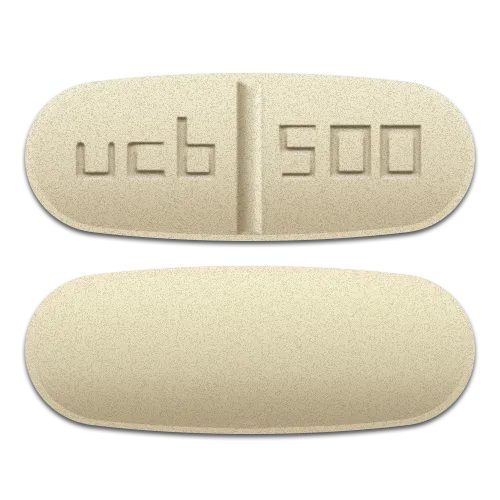Overview
Keppra, generically known as levetiracetam, is an anticonvulsant medication used to manage seizures in epilepsy. It stabilizes brain electrical activity, reducing seizure frequency and severity. Indicated for partial-onset, myoclonic, and primary generalized tonic-clonic seizures, Keppra is available in tablets, oral solutions, and injectable forms, offering flexible administration for diverse patient needs.
History of Development and Approval
Developed in the early 1990s by UCB Pharma, Keppra received FDA approval in 1999 for partial-onset seizures, with later approvals for myoclonic and tonic-clonic seizures. Its broad efficacy and favorable safety profile have made it a cornerstone in epilepsy treatment.
Key Benefits
- Seizure Reduction: Effectively lowers frequency and severity of seizures.
- Broad Application: Treats multiple seizure types, including partial, myoclonic, and tonic-clonic.
- Safe Profile: Well-tolerated with minimal severe side effects.
- Flexible Forms: Tablets, solutions, and injectables suit varied patient needs.
Unique Properties
Keppra’s minimal drug interactions, due to limited liver metabolism, make it ideal for patients on multiple medications. Its broad-spectrum efficacy and rapid onset provide reliable seizure control across epilepsy types.
Comparison with Similar Medications
Compared to other anticonvulsants, Keppra offers:
- Low Interaction Risk: Minimal impact on other drugs’ metabolism.
- Fast Stabilization: Quickly reduces seizure activity.
- Better Tolerability: Lower risk of severe side effects than some alternatives.
Safety and Tolerability
Keppra is generally well-tolerated, with common side effects like drowsiness, dizziness, and fatigue. Rare serious effects include severe allergic reactions or psychiatric symptoms (e.g., mood changes, depression). Regular medical monitoring ensures safe and effective use.
Indications for Use
Keppra is prescribed for:
- Partial-Onset Seizures: In adults and children (4+ years).
- Myoclonic Seizures: In adults and adolescents (12+ years) with juvenile myoclonic epilepsy.
- Primary Generalized Tonic-Clonic Seizures: In adults and children (6+ years).
Dosage and Administration
Adults: Start 500 mg twice daily, may increase to 1000–3000 mg/day.
Children: Weight-based (20–60 mg/kg/day), divided twice daily.
Elderly: Adjust for renal function, start lower.
Timing: Consistent twice daily, with/without food.
Notes: Gradual dose increases; renal impairment requires adjustment.
Mechanism of Action
Levetiracetam modulates synaptic vesicle protein SV2A, reducing abnormal neuronal firing and stabilizing brain electrical activity to prevent seizures.
Composition
Active Ingredient: Levetiracetam, drives anticonvulsant effects.
Inactive Ingredients: Tablets: cellulose, starch; solution: maltitol; injectable: sodium acetate for stability.
Side Effects
Common: Drowsiness, dizziness, fatigue, irritability.
Rare: Mood changes, coordination issues.
Serious: Severe allergic reactions, suicidal thoughts, psychosis require urgent care.
Prevention of Side Effects
Start with low doses, increase gradually, monitor mood/behavior. Use reminders (alarms, apps) for adherence; report issues promptly.
Contraindications
Avoid in hypersensitivity to levetiracetam; caution in renal impairment.
Warnings and Precautions
Monitor for psychiatric symptoms, renal function, or withdrawal seizures. Caution in depression history or renal issues.
Drug Interactions
Minimal interactions; some anticonvulsants (e.g., carbamazepine) may alter levels. Disclose all medications to provider.
Overdose
Symptoms: drowsiness, agitation, respiratory depression. Seek emergency care immediately.
Pharmacokinetics
Absorption: Rapid, peak 1 hour.
Distribution: Wide, minimal protein binding.
Metabolism: Minimal liver metabolism.
Elimination: Kidneys (66% unchanged); half-life 6–8 hours.
Dosage Forms
Tablets (250–1000 mg), oral solution (100 mg/mL), injectable (100 mg/mL) for flexible use.
Pregnancy and Breastfeeding
Use if benefits outweigh risks (Category C); excreted in milk, consult provider.
Storage
Store at 20°C–25°C (68°F–77°F), dry, light-protected, away from children. Dispose expired properly.
Clinical Evidence
Trials confirm Keppra reduces seizure frequency across partial, myoclonic, and tonic-clonic types versus placebo, with minimal interactions and good tolerability.
Conclusion
Keppra is a highly effective, well-tolerated anticonvulsant for epilepsy, offering broad-spectrum seizure control and minimal drug interactions. Adhere to dosing, monitor effects, and consult providers for optimal outcomes.




